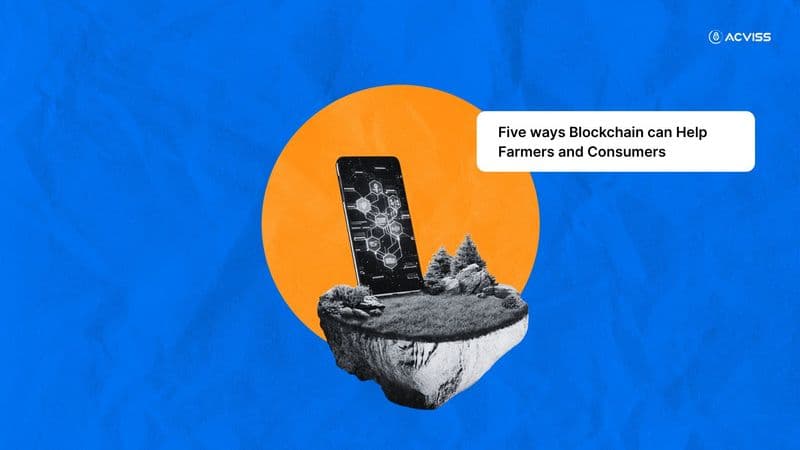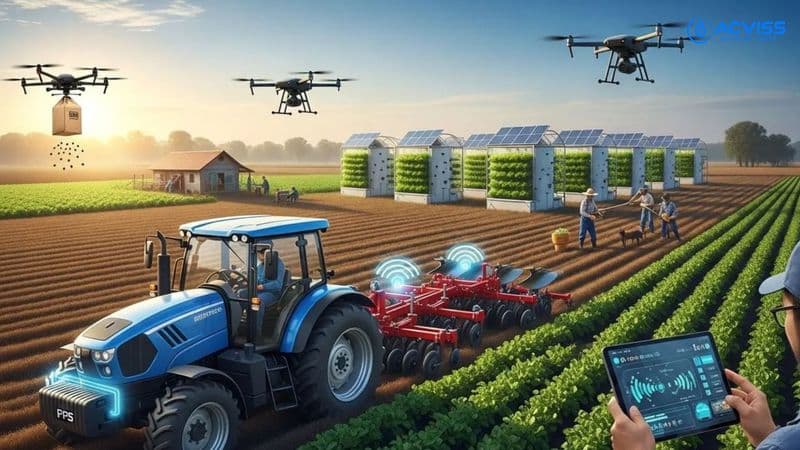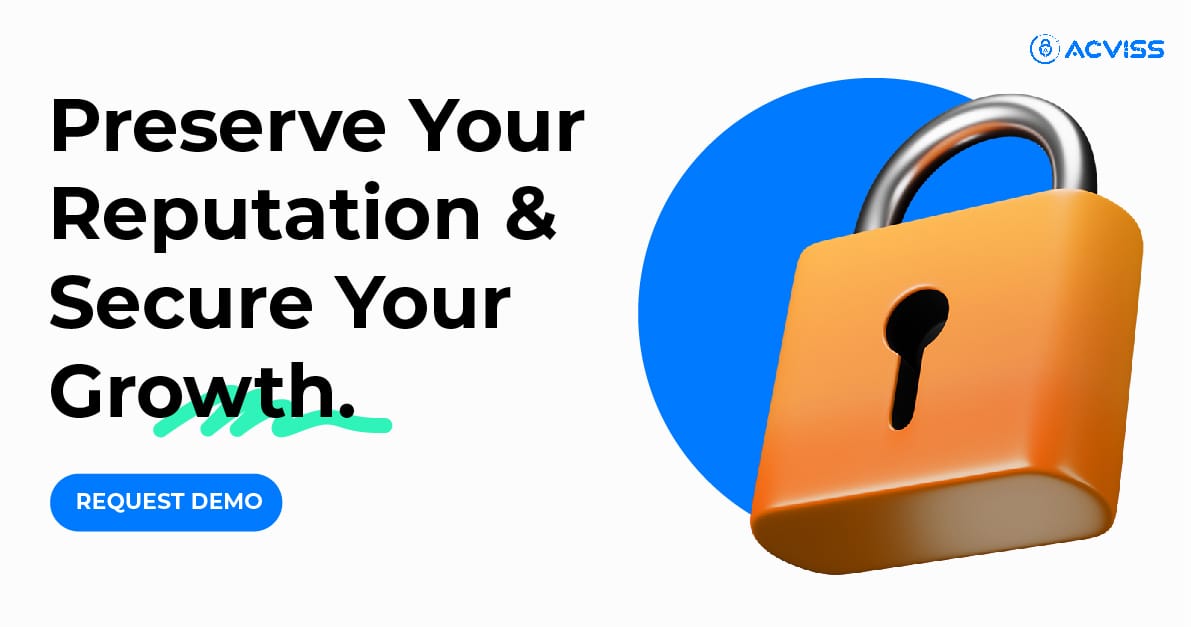Five ways Blockchain can Help Farmers and Consumers

Agriculture is an integral part of most countries’ economic progress. The green revolution made us self enough for food grains. Practising high-yield and low-wastage techniques is crucial for food security. But in the broader sense, what does food safety and security mean? As we move towards modernizing farming, do we need to redefine food security? What role can machine learning and blockchain play in modern agriculture?
Food Security and Blockchain Technology
Food security is not just food sufficiency. With developing countries aiming to expand the export market, quality checks on food grains are a need. Food security is now also about ensuring that the product is genuine and safe for consumption. The first step in food security is tracing its journey across the supply chain. A single unit of farm produce travels from remote farmland to global cities. The supply chain is complex. Blockchain technology can aid farm produce in many ways.
From efficiency to transparency, blockchain offers end-to-end traceability.
One can relate blockchain to cryptocurrencies, FMCG, and BFSI. But agriculture does not come to mind. With growing concerns about counterfeit farm produce, agriculture can use blockchain to secure the supply chain.
Supply chain issues in agriculture
- Interdependency of stakeholders: Agricultural products may be used for direct consumption or as raw materials. Farmers, processors, wholesalers, and retailers are involved in the product journey. These stakeholders operate in silos. So, any lapse in storage and handling can impact the final product. Traceability is important to understand the point where things went wrong for the product. Traceability through blockchain can ensure accountability.
- Perishable items: You can directly consume a farm product or use packaged food made from it. In both cases, the item is perishable. So, it is necessary to have important product information at every stage. The packaging must include the expiry date and details on manufacturing. Blockchain can store information on soil quality, yield quality, farm conditions, and more.
- Skewed information: There are so many middlemen across the supply chain in most countries. Often, the middlemen have more information than the farmers and consumers. A skewed knowledge about crop efficiency and soil quality impacts fair pricing. With blockchain technology, the information is accessible to all.
Must Read: Securing the Dairy Farming Supply Chain with Traceability Solution
How Does Blockchain Regulate the Supply Chain?

Blockchain ensures that data storage is seamless. The distributed storage platform reduces the risk of data loss. Blockchain in agriculture can reduce food fraud by:
- Enabling IoT sensors for farmers to capture data about the farmland and crop. The data points can include:
- Quality of the crop and seed
- Soil type and quality
- Weather conditions when the farmer sowed the seeds
- Bids for contracts can happen on the platform. Transparency of information ensures fair bidding and pricing.
- Refineries can store crop processing information at every step. Wholesalers and retailers can then validate the information. So blockchain can aid in quality control.
- Since data is stored at every stage, meeting compliance standards is easy.
Blockchain plugs gaps in the agriculture supply chain. In turn, blockchain in agriculture helps in food security and safety.
How Can Blockchain in Agriculture Help the Farmer?

The majority of agricultural activity in developing countries is dependent on monsoons. So the farmers suffer losses due to weather fluctuations. Blockchain, along with IoT, can provide accurate weather data. Forecasting can help reduce crop loss due to sudden climate changes.
Monitoring soil quality:
IoT and blockchain can store data on soil quality. It can capture data points like:
- Temperature
- Soil pH value
- Moisture
Additionally, blockchain technology can help stakeholders understand the quality and nature of pesticides. Sustainable agriculture practices need us to optimize resources. Monitoring soil, pesticides, fertilizers, and water levels through technology is crucial for modern farming. The advantage of storing data using blockchain is that it reduces the risk of data loss. Data stored on a centralized server depends on a single point. With blockchain, the data is distributed across nodes.
Machine Learning and Insights:
Blockchain and IoT go beyond data storage. The technology enriches data to make it more understandable. Machine learning can streamline agriculture to make it more profitable. Farmers and other stakeholders can gain insights like:
- Demand prediction
- Prediction on crop yield
- Datapoints to improve irrigation
- Quality recommendations for higher revenue
Data stored on blockchain makes way for predictive models that reduce uncertainties.
What is in it for the consumer?
Blockchain makes it possible to backtrack at any point. Do you want to know where the packet of food you consume daily comes from? Are you sure your food is safe for you? With metadata, a consumer can learn some things like:
- Origin and farm conditions
- Expiry and batch details
- Details on storage and transportation
- Details on manufacturing units and processing units
In short, blockchain in agriculture tells the story of the farmer and the food! With more use cases, blockchain in agriculture will be the future!
But is Blockchain Enough? Blockchain and Anti-counterfeiting
Blockchain in itself provides enough benefits. Blockchain gives a digital identity to a product unit. But standalone, blockchain technology cannot prevent counterfeit products. It is easy to copy the digital identity of a product. With identity thefts becoming rampant, contaminated products can enter the supply chain. So, we need to supplement the blockchain with tamper-proof and tamper-evident markers and IDs.
Holistic use of anti-counterfeit technology, backed by blockchain, can ensure food security.
1. Physical security markers like holograms or QR codes that are difficult to replicate
2. Chemical fingerprinting technology to verify product authenticity
3. Real-time tracking systems with tamper-evident packaging
4. Multi-factor authentication protocols for digital identity verification
5. Smart contracts that automatically flag suspicious patterns in the supply chain
These integrated solutions provide a robust framework for protecting agricultural products throughout their journey from farm to table.
Conclusion:
As agriculture evolves in the digital age, the combination of blockchain and anti-counterfeiting technologies offers a powerful solution for ensuring food security, traceability, and authenticity. By implementing these systems, stakeholders can build trust, reduce fraud, and create a more transparent and efficient agricultural supply chain.
Ready to secure your agricultural supply chain? Get in touch with us today to discover how our blockchain-enabled anti-counterfeiting solutions can protect your products and enhance your operations. Visit acviss.com/book-demo today to get started.
Frequently Asked Questions (FAQs)
1. What are the costs associated with implementing blockchain technology in agriculture?
A: Initial setup costs include IoT sensor infrastructure, blockchain platform development, and training for stakeholders. However, long-term benefits like reduced fraud and improved efficiency typically offset these investments over time.
2. How does blockchain handle offline data collection in areas with poor internet connectivity?
A: Blockchain systems can use edge computing and local data caching to store information temporarily when offline. Once connectivity is restored, the data synchronizes with the main blockchain network.
3. What privacy measures protect farmers' sensitive data on the blockchain?
A: Private or permissioned blockchain networks restrict data access to authorized participants. Encryption and smart contracts control what information different stakeholders can view while maintaining transparency where needed.
4. How does blockchain integration affect existing agricultural management systems?
A: Integration requires APIs and middleware to connect legacy systems with blockchain networks. Most solutions opt for gradual implementation, starting with specific supply chain segments before full deployment.
5. What regulatory compliance challenges exist for blockchain adoption in agriculture?
A: Key challenges include data protection laws, cross-border regulations for international trade, and varying food safety standards across different regions. Solutions must be designed to meet these diverse regulatory requirements.
